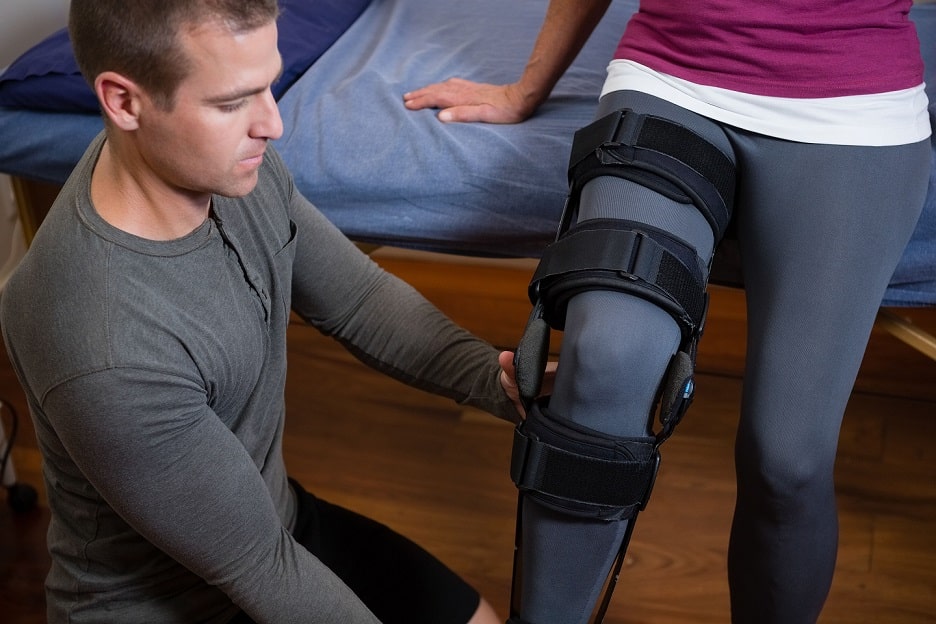 As a man who used to spend his time climbing rocks faces as a hobby, both indoor and outdoor, and having previously worked at height for a refurbishing job a few years back, I’m no stranger to the danger involved and the measures people need to take place to ensure you don’t end up falling from a height.
As a man who used to spend his time climbing rocks faces as a hobby, both indoor and outdoor, and having previously worked at height for a refurbishing job a few years back, I’m no stranger to the danger involved and the measures people need to take place to ensure you don’t end up falling from a height.
It only takes one slip, trip, or stumble when up high somewhere to end up careering down a height and facing the potential of a serious injury. It’s an obvious statement that falling from a height can end up in serious damage and even fatalities. So when it comes to working at height as part of the role, the responsibility, as always, falls largely on your employer.
Your employer must take all reasonable steps to ensure that you are safe when working at height. If you are working with ladders, you should be properly trained and provided with the right type of ladders for the job you are doing. If the job requires someone to be at the base of the ladders to stabilise them, then this should always be the case. You should be fully fit to use the ladders, and the ladders should be in a condition to allow the job to be done safely. So if the ladders were to collapse due to disrepair, or fall because they were the wrong type of ladders for the job, or if they were not suitably stabilised, you may have a claim against your employer.
Scaffolding is a common one – the scaffolding should be secure and steady so as not to cause any potential hazards from moving or swaying surfaces, and rails should be in place to prevent anyone falling over the edge. An inspection of the scaffolding should be done once it has been erected to ensure the scaffolding has been properly and safely put together. It’s no use a platform collapsing inwards if the fittings aren’t long enough, for example. Further inspections need to be done thereafter on a reasonable and regular basis as well.
There are other more obvious jobs working at height that may well require the use of harnesses and ropes. Again, the responsibility for training you and providing and maintaining the equipment necessary for the job falls squarely on your employer; if they fail to do this, you may have a claim if you are injured as a result.
“Personally I like to do things safely and by the book when it comes to my health. When I did my stint of renovation that meant working at heights of around 20ft – 50 ft over a solid concrete surface, I made sure the scaffolding I used was solid and sturdy, well erected (although I did most of it myself so I was happy with the job!) and I donned my climbing harness and had a few quickdraw clips so I was always fastened to the scaffolding just in case. This was necessary as some of the job involved reaching over the edge or being on the outer edge of the scaffolding. I was confident in my abilities and made sure I was always safe. Thankfully there were no slip ups; but had there been, I would have lived to tell the tale! I was self employed so it was all down to me to make sure I was doing things correctly.”
My mindset, is the mindset employers should have for their employees, when risk assessing and planning working at height activities. If you end up injured because your employer has failed to do things properly and by the book, you may have a claim for compensation. Get in touch today on 0800 634 75 75 for advice on where you stand for your case.

 As a man who used to spend his time climbing rocks faces as a hobby, both indoor and outdoor, and having previously worked at height for a refurbishing job a few years back, I’m no stranger to the danger involved and the measures people need to take place to ensure you don’t end up falling from a height.
As a man who used to spend his time climbing rocks faces as a hobby, both indoor and outdoor, and having previously worked at height for a refurbishing job a few years back, I’m no stranger to the danger involved and the measures people need to take place to ensure you don’t end up falling from a height.









